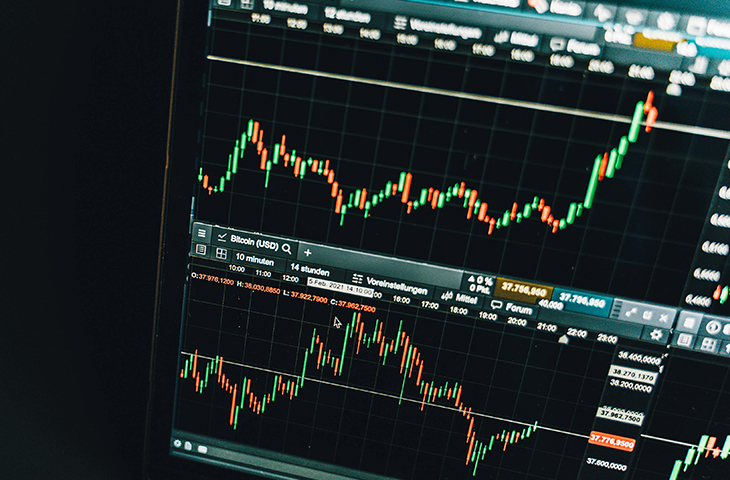History Says The Nasdaq Could Soar In 2025: 2 Ai Stocks To Buy Before It Does.

According to data from CNBC going back to 1980, the Nasdaq and other benchmark indexes have historically risen in the months following a presidential election. This trend has continued in 2024, with the tech-heavy index up by around 10% since Donald Trump's win on Nov. 5. A new administration can mean less political uncertainty, making many market participants more comfortable holding assets in general.
There is no guarantee that the Nasdaq's momentum will continue in 2025. But as Wall Street continues to pour money into AI tech, Advanced Micro Devices (NASDAQ: AMD) and Amazon (NASDAQ: AMZN) are two stocks could ride the wave into another year of stellar growth. Let's dig deeper.
Where to invest $1,000 right now? Our analyst team just revealed what they believe are the 10 best stocks to buy right now. See the 10 stocks »
1. Advanced Micro Devices
With shares down 13% this year, AMD is a chipmaker that somehow missed out on much of the generative AI rally despite being a big player in the hardware side of the opportunity. The chipmaker's diversified business model makes it a great alternative to Nvidia. And a reasonable valuation is icing on the cake for investors.
AMD's third-quarter revenue grew by a modest 17% year over year to $6.8 billion. However, this consolidated number might hide the spectacular performance of its data center segment, which soared 122% to $3.5 billion, driven by sales of advanced graphics processing units (GPUs) for running and training AI algorithms. Management plans to drive continued data center growth by releasing new, more advanced chips, such as the Instinct MI325X series, designed to compete with Nvidia's Blackwell.
With 51% of revenue coming from data center sales, AMD is much more diversified than Nvidia, which earned around 88% of its third-quarter sales from the data center segment. While AMD's less AI-driven business model has led to slower near-term growth, it will make the company much more resistant to a potential slowdown in the industry.
AMD's forward price-to-earnings (P/E) multiple of 25 is also lower than Nvidia's, which is around 31 times forward earnings.
2. Amazon
While AMD is diversified within the technology hardware industry, Amazon takes diversification to another level with footprints in e-commerce, cloud computing, and AI infrastructure. Management's cost-cutting efforts have put the company in an excellent position to execute its long-term strategy and return value to investors.
Under the leadership of CEO Andy Jassy, who took the helm in early 2021, Amazon has pivoted from a growth-at-all-costs strategy to one that prioritizes sustainable profitability. Several years of layoffs and fulfillment-network optimization have worked wonders on its operational results.
While Q3 earnings increased by 11% year over year to $158.9 billion, operating income soared 64% to $17.4 billion.
The cloud-computing segment, Amazon Web Services (AWS), continues to be the cornerstone of Amazon's bottom line -- representing $10.4 billion in operating income. And there is plenty of room for continued growth.
Image source: Getty Images.
AWS gives Amazon exposure to the picks-and-shovels side of the AI opportunity, allowing it to essentially "rent out" Nvidia GPU computing power to AI start-ups. This strategy shields Amazon from some of the risks involved in trying to compete in the more speculative software side of the industry. Amazon has also developed its own AI chips called Trainum and inferentia, which can offer customers cost-savings for specific workloads and reduce its dependence on suppliers like Nvidia.
It's time to get a little defensive
Since the launch of OpenAI's ChatGPT in late 2022, the generative AI industry has minted its share of millionaires. The hype cycle can easily continue in 2025. That said, investors should remember AI is still a highly speculative industry. And it is unclear how much longer companies will maintain their elevated spending levels on research and hardware.
Companies like AMD and Amazon are ideal for the long term because they give investors exposure to the picks-and-shovels side of this opportunity while maintaining potentially safer, diversified business models.
Don’t miss this second chance at a potentially lucrative opportunity
Ever feel like you missed the boat in buying the most successful stocks? Then you’ll want to hear this.
On rare occasions, our expert team of analysts issues a “Double Down” stock recommendation for companies that they think are about to pop. If you’re worried you’ve already missed your chance to invest, now is the best time to buy before it’s too late. And the numbers speak for themselves:
- Nvidia: if you invested $1,000 when we doubled down in 2009, you’d have $349,279!*
- Apple: if you invested $1,000 when we doubled down in 2008, you’d have $48,196!*
- Netflix: if you invested $1,000 when we doubled down in 2004, you’d have $490,243!*
Right now, we’re issuing “Double Down” alerts for three incredible companies, and there may not be another chance like this anytime soon.
*Stock Advisor returns as of December 16, 2024
John Mackey, former CEO of Whole Foods Market, an Amazon subsidiary, is a member of The Motley Fool's board of directors. Will Ebiefung has no position in any of the stocks mentioned. The Motley Fool has positions in and recommends Advanced Micro Devices, Amazon, and Nvidia. The Motley Fool has a disclosure policy.


